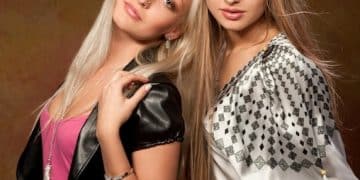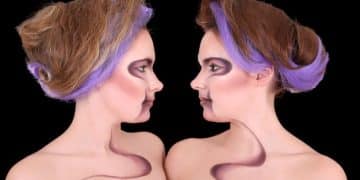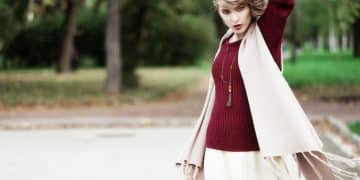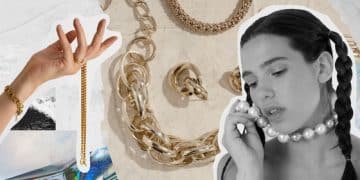Celebrity Fashion Fails: Avoid Style Disasters & Learn What Not to Wear

Celebrity fashion fails highlight the importance of mindful outfit choices, offering valuable lessons on what styles to avoid and providing inspiration for crafting impeccable looks to prevent a style disaster.
The world of celebrity fashion is often seen as glamorous and aspirational, but even the biggest stars have their off days. Celebrity fashion fails can be a source of amusement, but they also offer valuable lessons on what not to wear and how to avoid a style disaster. Let’s dive into some memorable mishaps and learn how to navigate the treacherous waters of red carpet dressing.
Iconic Celebrity Fashion Fails: A Walk of Shame
Celebrity fashion blunders are not just limited to wardrobe malfunctions. Sometimes, it’s about choosing the wrong outfit for the occasion or simply missing the mark on current trends. We’ll explore some unforgettable moments where stars missed the mark.
The Infamous Wardrobe Malfunctions
Wardrobe malfunctions are the most talked-about type of fashion faux pas. These unexpected moments can range from minor slips to major exposures.
- Janet Jackson’s Super Bowl Halftime Show (2004): This is perhaps the most notorious wardrobe malfunction in history. The incident led to widespread controversy and changed broadcast regulations.
- Jennifer Lawrence at the Oscars (2013): While accepting her Best Actress award, Lawrence tripped on her Dior gown, turning a graceful moment into a relatable mishap.
- Chrissy Teigen at the AMAs (2016): Teigen’s high-slit dress caused a bit of an over-exposure, but she handled it with humor and grace.
Trend-Related Mishaps
Following trends is a double-edged sword. What’s hot one season might be a fashion crime the next. Celebrities sometimes fall victim to trends that simply don’t work.
From oversized clothing to neon overload, questionable trend choices have plagued red carpets. Remember when everyone was wearing low-rise jeans? Not always a flattering look, even on the most toned figures. Similarly, the early 2000s obsession with visible thongs and excessive logos didn’t age well. Learning to discern which trends suit your personal style and body type is crucial.
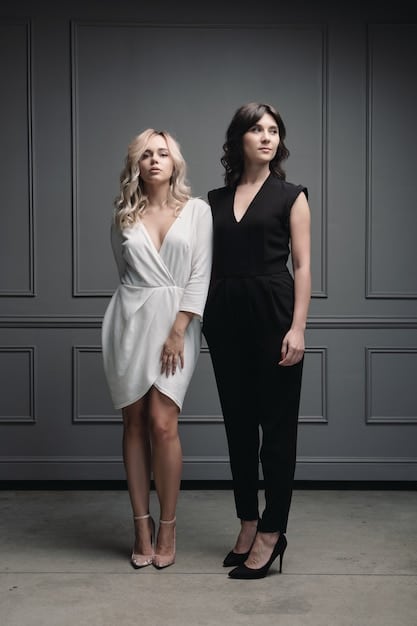
This section explored some of the most memorable fashion fails, proving that even celebrities are not immune to making style mistakes. From wardrobe malfunctions to questionable trend choices, the key takeaway is to learn from these moments and strive for timelessness and appropriateness in your own style.
Common Fashion Mistakes and How to Avoid Them
Identifying common fashion pitfalls is the first step in preventing a style disaster. Certain mistakes are more frequent than others, and understanding them can help you steer clear.
Mismatched Outfits
Wearing clothes that don’t complement each other can ruin an entire look. This includes clashing colors, patterns, and styles.
Ill-Fitting Clothing
Clothes that are too tight or too loose can be unflattering. Fit is crucial for creating a polished and put-together appearance.
- Know Your Measurements: Regularly measure yourself to ensure you’re buying the correct size.
- Tailoring is Key: Investing in tailoring can make even affordable clothes look expensive and well-fitted.
- Consider the Fabric: Some fabrics drape better than others. Choose fabrics that flatter your body type.
Over-Accessorizing
Too many accessories can overwhelm an outfit. Sometimes, less is more when it comes to jewelry, belts, and bags.
The key to accessorizing is balance. A statement necklace looks great with a simple dress, but pairing it with bold earrings and a patterned top can be overwhelming. Similarly, a stack of bracelets can add flair to a casual outfit, but it might be too much for a formal ensemble. Learning to edit your accessories and choosing pieces that enhance rather than distract from your outfit is essential.
By recognizing these frequent fashion blunders, you can proactively dodge them. Paying attention to fit, coordination, and appropriate accessorizing can transform your look from a potential disaster to a stylish success.
Dressing for Your Body Type: The Golden Rule
Understanding your body shape is essential for making smart fashion choices. Clothes that look great on one person might not suit another.
Identifying Your Body Type
Are you an apple, pear, hourglass, or rectangle? Knowing your shape is the foundation for building a flattering wardrobe.
Flattering Silhouettes
Choose clothes that balance your proportions and highlight your best features. For example, A-line skirts are often recommended for pear-shaped figures, while empire waist dresses can flatter apple shapes.
- Apple (Inverted Triangle): Opt for V-neck tops and dresses to draw attention downward and create a balanced silhouette.
- Pear (Triangle): A-line skirts and dresses that cinch at the waist can highlight your narrowest point.
- Hourglass: Fitted dresses and tops that accentuate your waist are ideal for showcasing your curves.
The Importance of Proportions
Balancing your top and bottom halves can create a harmonious look. If you have broader shoulders, consider wearing darker colors on top and lighter colors on the bottom.
Proportions play a pivotal role in creating visually appealing outfits. For instance, if you’re wearing an oversized top, pair it with fitted pants or a skirt to balance the volume. Conversely, if you’re wearing wide-leg pants, opt for a more fitted top to avoid looking shapeless. Paying attention to how your clothes interact with each other in terms of volume and shape ensures a well-balanced and flattering appearance.
Knowing your body type and choosing silhouettes that enhance your natural shape can make a world of difference. It’s not about conforming to a specific ideal but about making informed choices that celebrate your unique figure.
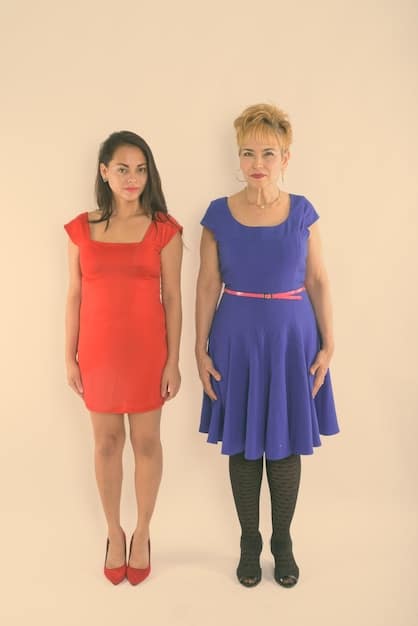
The Role of Occasion: Dressing Appropriately
What you wear should always be dictated by the occasion. What looks great at a casual brunch might be totally inappropriate for a formal event.
Decoding Dress Codes
Understanding dress codes like “business casual,” “cocktail attire,” and “black tie” is crucial for avoiding fashion fails.
Casual vs. Formal
Knowing the difference between casual and formal wear can prevent embarrassing style mistakes.
- Casual: Think comfortable and relaxed. Jeans, t-shirts, and sneakers are usually acceptable.
- Business Casual: A step up from casual, this includes khakis, button-down shirts, and blazers.
- Cocktail Attire: Typically involves a knee-length dress or a dressy pantsuit.
Themed Events
Some events have specific themes that require careful planning. Researching the theme and choosing an appropriate outfit is essential.
Themed events add an extra layer of complexity to dressing appropriately. Whether it’s a Roaring Twenties party or a futuristic gala, understanding the theme and interpreting it in a stylish and respectful way is key. Doing your research and considering the overall aesthetic of the event can help you create a memorable and appropriate look.
Accessorizing Wisely: The Finishing Touch
Accessories can make or break an outfit. Choosing the right accessories can elevate your look, while the wrong ones can drag it down.
Jewelry
The right jewelry can add sparkle and personality to your outfit. Consider the occasion and your outfit’s neckline when choosing necklaces, earrings, and bracelets.
Shoes
Shoes are not just functional; they’re a key element of your overall look. Choose shoes that are comfortable, stylish, and appropriate for the occasion.
- Balance: Make sure your accessories complement your outfit without overwhelming it.
- Comfort: Choose shoes that are comfortable enough to wear for extended periods.
- Quality: Invest in high-quality accessories that will last and elevate your look.
Belts and Bags
Belts can cinch your waist and add structure to your outfit, while bags can be both functional and fashionable.
Belts and bags offer an opportunity to add both form and function to your outfit. A well-chosen belt can define your waist and create a more flattering silhouette, while a stylish bag can hold your essentials and add a pop of color or texture to your look. Consider the overall aesthetic of your outfit and choose accessories that enhance and complement it.
Building a Versatile Wardrobe: The Foundation of Style
Having a versatile wardrobe is essential for creating a variety of stylish outfits. The right pieces can be mixed and matched for different occasions.
Essential Pieces
Invest in classic pieces that will never go out of style, such as a little black dress, a well-fitted blazer, and a pair of dark-wash jeans.
Mix and Match
Learn how to mix and match your clothes to create different looks with the same pieces.
- Neutral Colors: Focus on building a wardrobe with neutral colors that can be easily paired with other colors and patterns.
- Layering: Learn how to layer your clothes to create interesting and stylish outfits.
- Experiment: Don’t be afraid to experiment with different styles and combinations to find what works best for you.
Quality over Quantity
It’s better to have a few high-quality pieces than a closet full of cheap, poorly made clothes.
Building a versatile wardrobe is about curating a collection of essential pieces that can be mixed and matched to create a variety of outfits. Investing in quality over quantity ensures that your clothes will last longer and look better. By focusing on neutral colors, classic styles, and versatile pieces, you can create a wardrobe that works for any occasion.
| Key Takeaway | Brief Description |
|---|---|
| 👗 Body Type Matters | Dress for your shape to enhance your natural figure. |
| 👠 Occasion Counts | Match your outfit to the event’s dress code. |
| ✨ Accessorize Wisely | Less is often more; choose accessories that complement. |
| 🧥 Versatile Wardrobe | Build a flexible wardrobe with timeless, mix-and-match pieces. |
Frequently Asked Questions
▼
One of the most frequent errors is wearing ill-fitting clothing. Whether it’s too tight, too loose, or simply not tailored correctly, poor fit can detract from even the most expensive garments. Celebrities should always prioritize proper fit for a polished look.
▼
To minimize the risk of wardrobe malfunctions, always conduct a “test run” of your outfit before leaving the house. Check for potential problem areas and ensure that everything stays in place with movement. Also, consider using fashion tape for extra security.
▼
Start by identifying your body shape (apple, pear, hourglass, etc.) and then research which styles complement those features. In general, focus on creating balance and highlighting your best assets. Consulting with a stylist can provide personalized advice.
▼
Dressing appropriately for the occasion is crucial to show respect and fit in with the environment. Overdressing or underdressing can make you feel uncomfortable and out of place. Research the dress code or ask the host for guidance if unsure.
▼
Key items include a well-fitted blazer, a classic white shirt, dark-wash jeans, a little black dress, and neutral-colored shoes. These pieces can be mixed and matched to create numerous outfits suitable for various occasions, providing a solid foundation for any wardrobe.
Conclusion
Celebrity fashion fails provide valuable lessons on navigating the world of style. By understanding common mistakes, dressing for your body type, and accessorizing wisely, you can avoid your own style disasters and create a wardrobe that reflects your personal taste and confidence.
